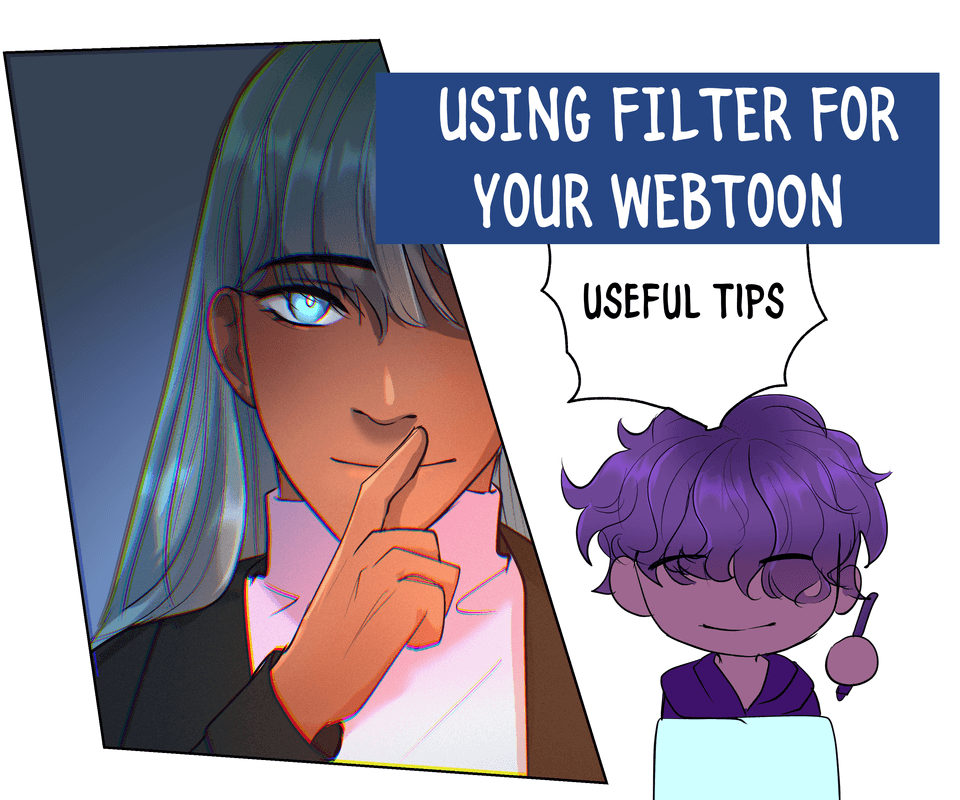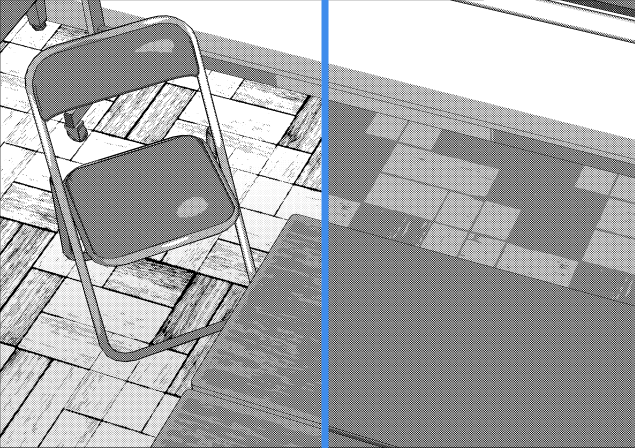Tutorial to paint reptiles in Clip Studio Paint
1.About this article
Painting reptiles can be considered complicated because artists usually focus on the details of the scales, neglecting the shadows of the larger areas of the illustration. That is why in this tutorial we will focus on giving shadows to the entire drawing first, in a way that allows us to create the illusion of the volume, and then give way to the shading of the details, making use of increasingly fine brushes.
You should keep in mind that I use the English version of the software and that both the captures and the names are those of this version.
2. Summary of the steps to follow
We begin to work on a drawing of a reptile; Below we will put a layer with a lighter gray color and paint the line with a dark gray color. We will merge both layers and paint the shadows, we will blur the line of the drawing, we will create the detail of the scales, we will give color to the drawing, and finally we will put the lights. For this tutorial we will use brushes already installed in the program: Running color edge watercolor and Smooth water color.
3.Filling the initial figure
We started working on the basis of our original drawing, outlined, still unpainted. For the moment we will only worry about giving lights and shadows (we will work with gray tones), we will put the colors later.
We place ourselves in the outlined layer and click on the [Magic Wand] tool, select the [Refer edited layer only to select] option in the [Subtool Auto Select] menu, with the mouse we left click outside the drawing to select the part external of it, then with [Ctrl + Shift + i] we invert it and so we will have the reptile silhouette selected.
We will go to the Layer tab and create a new layer that we will place below the line of our drawing, which we will call Silhouette.
In this layer, we select a gray color and press the [Alt] + Back space (backspace on the Spanish keyboard) keys to fill the selection, in this way we paint the inside of the silhouette of our drawing.
We will go again to the Layer tab and choose the layer where the line of the outlined drawing is, press [Ctrl] + left click of the mouse on the icon of the layer where our outlined drawing is located, to select the line.
Then we choose a gray color with a darker shade than the one we just used to fill the drawing, and with that color we paint the lines, pressing [Ctrl] + Back Space to fill the selection.
4. Giving larger shadows
We select the brush: [Watercolor> Running color edge watercolor]
Now we will have to configure this brush; for this we go to the main menu [Window> Sub tool detail], and in the [Brush shape] tab we choose the [Air brush] option. Then, press the [Apply brush shape] button.
Select the size of the brush, clicking on [Brush Size] and choose a large size that allows us to shade the head and neck (for example, size 200).
Then we create a new layer and select [Multiply] as layer modes.
Press the [Clip at layer below] button, located at the top of the layers tab (Layers), so that we only paint the area corresponding to the content of the lower layer.
Using the [Eyedropper] tool (pressing [Alt] while we have the brush activated), we select the same color with which we had filled the reptile's silhouette.
With our brush set already, we begin to paint the shadows that correspond to the areas with the greatest volume of the drawing, without stopping at the details.
5.Giving medium sized shadows
As we did for the previous case, we change the size of our brush, reducing it to a size of 50.
6. Giving smaller shadows
Then, in this same layer, we begin to give shadows to areas with lower volume, even without focusing much on the details. The idea for the moment is that the forms are defined.
7.Defining the details of the drawing
We reduce our brush again to a size 10.
Now we will define the details of the drawing (scales, eyes, etc.), in addition to the shadows cast.
When we finish this last shading, we will make a copy of the layer that contains the silhouette of the lizard and this will merge it with the layer of the line and the layer where we have been painting the shadows.
Optional: To avoid losing what we have advanced so far, it is recommended to duplicate the layer we have painted, and continue painting on the copy. In case of error, this will allow us to start from this point. For this new copy, we also activate the option [Click at layer below]
We choose the oil brush [Smooth water color]
In this layer, with the tool [Eyedropper] we take the colors adjacent to the line of the drawing (light or dark, depending on what we need to paint) and with them we will be painting on this same line.
Depending on the pressure we exert on the brush, it will paint darker or mix the colors. Our goal is to disappear the line, so that only the shapes are seen through lights and shadows. We will not worry about defining the shapes well, we will do this later.
The contours of the forms will not always be the same thickness, since they are affected by light; they will be thicker in the parts with more shade, or thinner when there is more light.
With the same brush we will add on the skin lines for the scales. These lines should be very soft to give texture without overloading the drawing.
Now we select a darker gray color than the ones we have used so far; With this color we will define the darkest contours of the scales.
8. Increasing the contrast of the drawing
After finishing the shading of our drawing, we go to the main menu [Layer> New correction layer> Level correction], and we will move the level regulator bar until we get the image to be clearer and the details are better appreciated.
9.Giving color
We will select the content of the layer that contains the silhouette of the character; With this selection, we create a new layer in layer mode [Multiply], with a transparency of 48%.
We will fill this new layer with the main color of the character, which in this case will be green.
In this new layer, we will use the [Smooth water color] brush with other colors to paint the inside of the eyes, fangs, posterior scales and chest.
Now, we will duplicate this layer we just painted, we will go to the main menu, select Layer> Duplicate layer, change the layer mode to [Color] and the opacity to 65%.
10.Adding lights
We create a new layer where we will put the lights; the layer must be in [Add] mode with 58% opacity.
Select the [Watercolor> Running color edge watercolor] brush, set it in the main menu, click on Window> Sub tool detail> Brush shape, select [Spray] and then press the [Apply brush shape] button.
With this brush we begin to paint the lights highlighting details of the character (such as scales and shine on the teeth), and also giving textures.
The lights are always stronger in the central part of an illuminated area, and in the shaded parts they are scarce and of less intensity.
11 final finish
In the main menu, we select Layer> New correction layer> Color balance.
We modify the hue of the colors to - get the desired result (for example, C 24, M -17 and Y 21).
Now we will modify the brightness and contrast, for this we will go to the main menu, select Layer> New correction layer> Brightness / contrast.
We modify the brightness and contrast to highlight the colors more, we will make these changes trying not to overdo it, otherwise we would lose many of the details achieved so far (for example, Brightness 45 and contrast 45).
With this, we will have our drawing finished!
If you want to see more drawings like these, follow me on Instagram @javiergomezgarate and on my website:
























Comment